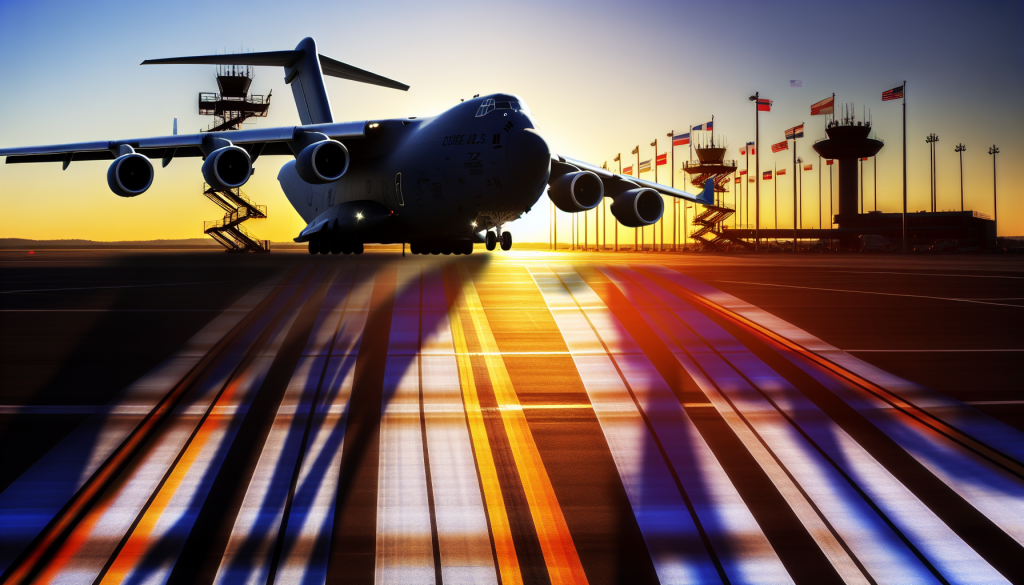Radia to Build the WindRunner: The World’s Largest Military Cargo Aircraft
On September 19, 2025, at the Air, Space & Cyber Conference, U.S. company Radia announced its ambitious plans to design and build what it claims will be the world’s largest military cargo aircraft, dubbed the WindRunner. This innovative transport aircraft is set to meet the increasing demands for efficient airlift capabilities among U.S. and NATO forces, particularly in light of rising global security concerns. By filling gaps in airlift capabilities, Radia’s initiative exemplifies a growing trend of transatlantic defense cooperation.
A Revolutionary Design for Modern Warfare
The WindRunner is engineered with one primary mission in mind: to provide unprecedented airlift capabilities. By focusing on internal cargo volume rather than payload mass, the aircraft aims to transport entire systems without the need for disassembly. This is especially vital in operations involving austere, degraded, or contested environments. The aircraft is designed to support existing fleets of strategic airlifters, like the C-130 Hercules and C-17 Globemaster III, which, while still operational, are no longer in production.
Capacity and Operational Flexibility
With an astonishing internal capacity exceeding 6,800 cubic meters, the WindRunner dwarfs its predecessors. For context, this is about seven times the cargo space of the C-5 Galaxy and twelve times that of the C-17. This incredible volume allows for efficient roll-on and roll-off deliveries of mission-ready equipment. Radia is keen to point out that modern joint operations often find themselves out of space before exceeding weight limits. The WindRunner aims to solve this logistical dilemma by enabling the transport of oversized assets in their fully operational forms, thus streamlining the deployment process.
Specific Capabilities
Radia has proposed some impressive capabilities to highlight the WindRunner’s potential roles in military logistics. The aircraft can transport six fully assembled CH-47 Chinook helicopters or four fighter jets like the F-16 or F-35C without requiring aerial refueling. By moving systems intact, the WindRunner is designed to drastically lower total flight hours and simplify operational complexities, reducing exposure to potential disruptions or threats.
Accessibility and Infrastructure Compatibility
Another significant aspect of the WindRunner is its ability to operate from unpaved runways as short as 1,800 meters. This feature allows it to reach locations that traditional outsized aircraft cannot, making it especially suited for combat sustainability in challenging operational theaters like the Indo-Pacific and Arctic regions. Moreover, compatibility with standard ground-handling equipment means that no specialized infrastructure will be necessary, supporting the principles of expeditionary logistics.
Technical Specifications
The WindRunner stands out, boasting dimensions of 108 meters in length, 80 meters in wingspan, and 24 meters in height. While its maximum payload capacity of around 72,575 kilograms may appear lower than other historical heavy lifters—like the Antonov An-225 Mriya—it compensates with a larger cargo volume. Its cruise speed is roughly Mach 0.6, translating to around 740 kilometers per hour. The design emphasizes volume over extensive range capabilities, rendering it ideal for missions that necessitate large cargoes over shorter distances.
Development and Future Prospects
Radia is committed to using certified and proven components during the aircraft’s development, aiming for its first flight to occur by the end of the decade, with initial operational capabilities projected around 2030. Current funding for the project stands at approximately $150 million, with discussions for further investment ongoing. The firm plans to leverage digital design tools to accelerate the development process, moving straight to full-scale test aircraft rather than wasting time on traditional prototypes.
Engaging With Defense Communities
Engagement with defense stakeholders has already begun. In May 2025, Radia signed a cooperative research and development agreement with the U.S. Transportation Command, specifically focusing on outsized cargo applications. This collaboration has garnered acknowledgment from the House Armed Services Committee, emphasizing the necessity for cargo airlift capabilities that can accommodate structures exceeding 300 feet in length.
A Dual-Use Platform
Initially conceived as a civil project for the transport of wind turbine blades, the WindRunner has evolved into a dual-use platform that can serve various sectors, including defense, energy, aerospace, and emergency response. Military-specific features, such as aerial refueling, may be added subsequently, but the priority remains to bring the aircraft to operational readiness by 2030.
Conclusion
With the WindRunner project, Radia not only sets out to revolutionize military logistics but also aims to meet the unique demands of modern warfare. Whether for defense missions or other critical tasks, the WindRunner embodies a forward-thinking approach to aerial transport, ensuring that U.S. and NATO forces maintain a strategic edge in their operational capabilities.
By focusing on these critical aspects of the upcoming WindRunner, Radia is well-positioned to redefine the logistics landscape in military operations worldwide.

